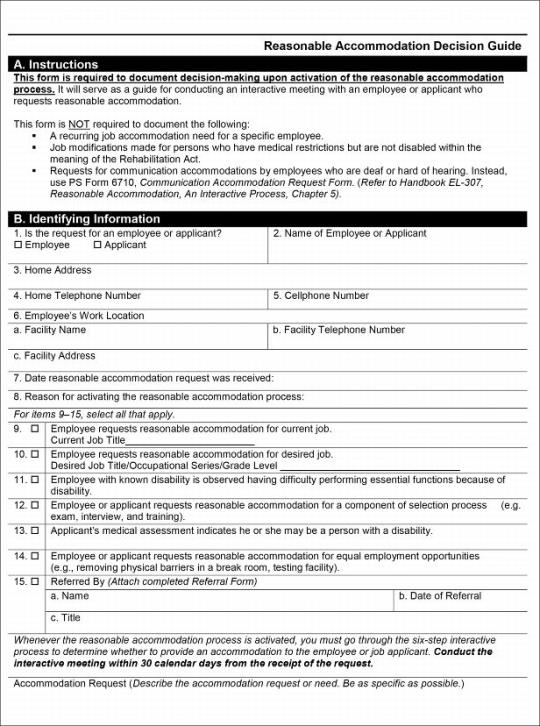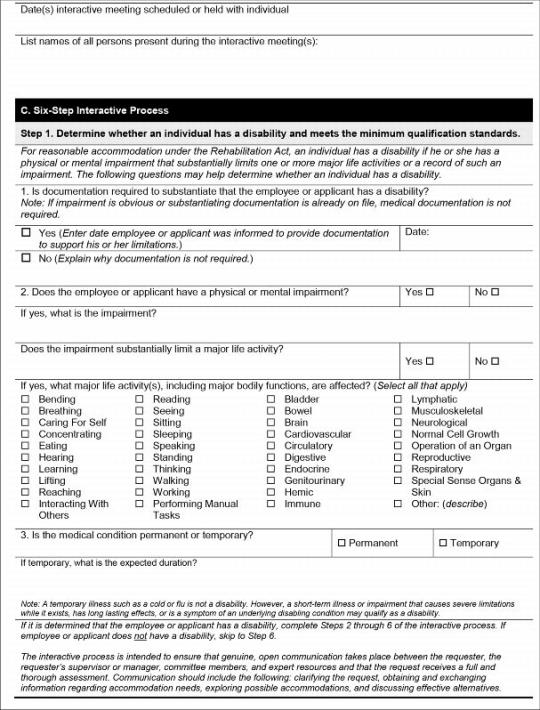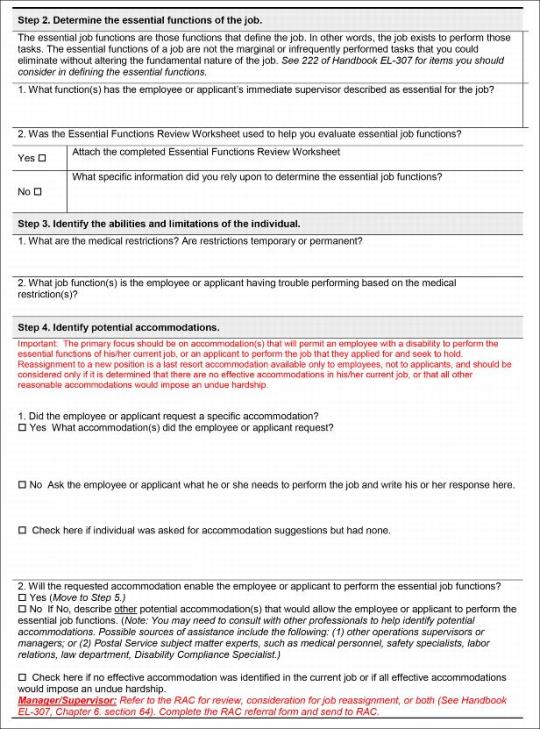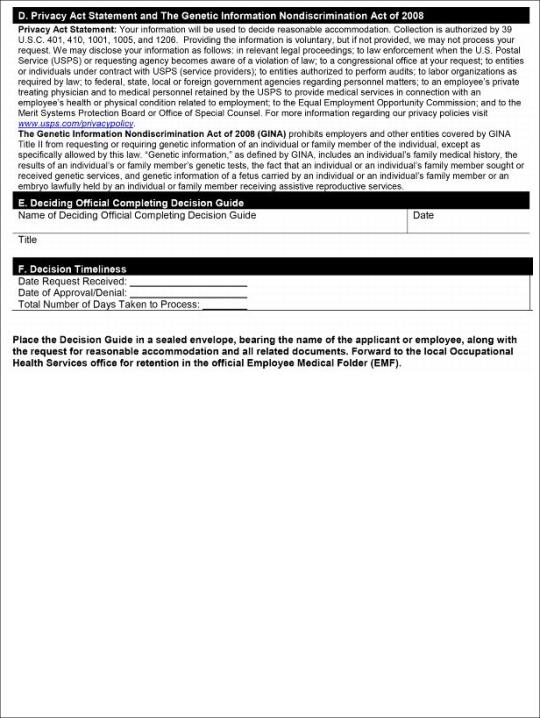When an accommodation request is received, whether orally or in writing, it must be processed promptly, using the guidance contained in this handbook. (See 24, “Time Frames for Processing Requests for Reasonable Accommodation.”) An informal dialogue should be conducted with the requestor to determine exactly:
Alternatively, supervisors or managers may refer the request to their district or area RAC for processing, as appropriate. (See Chapter 6, “Role of the Reasonable Accommodation Committee.”)
A request for accommodation must be referred to the RAC when an employee has requested an accommodation or modification of his or her work assignment or job duties based on a medical reason, and when one or more of the following is true for the supervisor or manager:
In addition, referral to the RAC is appropriate when an appointing official questions the medical suitability of an applicant.
Note: The supervisor or manager is not required to refer all requests for accommodation to a RAC. For example, if an employee requests specialized equipment, such as an ergonomic chair, and local management can provide the equipment expeditiously, there is no need for RAC involvement.
The supervisor or manager must document all requests for reasonable accommodation, orally or in writing, for the following reasons:
Exhibit 213(a), “Confirmation of Request for Reasonable Accommodation,” and Exhibit 213(b), “Reasonable Accommodation Decision Guide,” must be used for documentation purposes. Requests for communication accommodation from employees who are deaf or hard of hearing must be documented on PS Form 6710, Communication Accommodation Request Form. This form is available on the Postal Service PolicyNet website:
The direct URL for the Postal Service PolicyNet website is https://blue.usps.gov/cpim.
The supervisor or manager must provide a copy of the received Confirmation of Request for Reasonable Accommodation form or PS Form 6710 to the requesting individual to ensure he or she receives a Privacy Act Statement.1
Any information on the request must also be recorded in the Reasonable Accommodation Data Activity Reporting (RADAR) system.
Exception: Once an employee requests and the Postal Service grants a type of reasonable accommodation that the employee is likely to need repeatedly, then the Postal Service does not require documentation for record keeping each time the employee needs the accommodation. (See 26, “Record Keeping.”)
Whenever the supervisor or manager activates the reasonable accommodation process, a six-step process is followed to determine whether to provide an accommodation to the applicant or the employee. The steps are as follows:
- Step One: Determine whether an individual has a disability and meets minimum qualification standards.
- Step Two: Determine the essential functions of the job.
- Step Three: Identify the abilities and limitations of the individual.
- Step Four: Identify potential accommodations.
- Step Five: Determine the reasonableness of the accommodations and whether implementation would impose an undue hardship.
- Step Six: Select and implement an accommodation from identified reasonable alternatives that can be implemented without an undue hardship.
See 22 for detailed information on each step.
This is an interactive process and may require the supervisor, manager, or RAC consulting a number of people, including the following:
The Postal Service does not require the six-step interactive process if it is definitively clear that an individual is not a qualified individual with a disability. For example, an individual with a broken leg that the individual expects to heal in the usual time frame and without additional complications is generally not a qualified individual with a disability (see 142).
Exhibit 213(a)
Confirmation of Request for Reasonable Accommodation

Exhibit 213(b)
Reasonable Accommodation Decision Guide (page 1)

Exhibit 213(b)
Reasonable Accommodation Decision Guide (page 2)

Exhibit 213(b)
Reasonable Accommodation Decision Guide (page 3)

Exhibit 213(b)
Reasonable Accommodation Decision Guide (page 4)

Exhibit 213(b)
Reasonable Accommodation Decision Guide (page 5)
